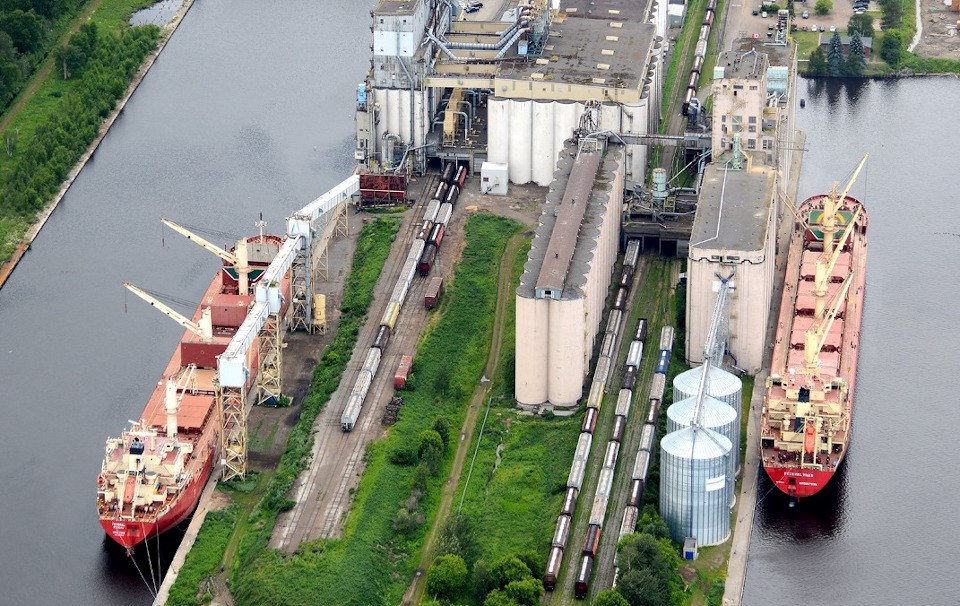Scott Bravener, the man at the helm of the one of Canada's fastest growing shipping companies, would like to see an extended shipping season on the Great Lakes.
The president of McKeil Marine was the featured speaker at the Port of Thunder Bay's virtual opening of the navigation season on April 7.
It was one of McKeil Marine's tug-barge combinations that opened the Lake Superior port on March 26, the second year in a row.
Bravener said an additional two weeks of sailing time would boost cargoes through the port and the St. Lawrence Seaway system by close to a half million tonnes of cargo. He said it's been proven over the years that shipping through the port at this time of year is viable.
Want to read more stories about business in the North? Subscribe to our newsletter.
With the St. Lawrence Seaway Management Corporation in the middle of a five-year pilot project to extend operations for the Welland Canal, Bravener wants to see this pilot expanded to the other Seaway locks in the chain with the goal of aligning it with the American locks at Sault Ste. Marie, Mich. to establish a March 25-to-Jan. 15 navigation season.
Thunder Bay is Canada's most western port on the Great Lakes and accounts for 20 per cent of the cargo tonnage that moves through the system.
Bravener mentioned Thunder Bay - a port he first visited as a deck cadet at the beginning of his 35-year career - has played a key role in the growth of the Burlington-headquartered company.
McKeil's shipments through Thunder Bay amounted to just shy of a half million tonnes in 2020. Bravener projects that to double in 2021.
With ships always on the clock, Bravener would also like to see more dialogue to facilitate 24/7 operations at the port.
"There's a great deal of lost vessel capacity in a finite season," he said, with significant costs accrued in having vessels stand idle for one-third of the day while in port.
Terry Bowles, president of the St. Lawrence Seaway Management Corporation, said he's firmly in favour of keeping the Seaway open for longer periods.
"The longer we're open, hopefully the more cargo that we're going to attract."
The St. Lambert Lock at Montreal opened to shipping this spring on March 22.
Bowles said it's been proven that the Seaway locks in the Quebec and Lake Ontario region can operate during cold weather. The federal government is also investing in shipbuilding construction toward having "better, stronger, more resilient icebreaking (capacity), he said.
Despite the pandemic, Bowles said the entire Seaway system has responded well to the needs of the market. He was buoyed by recent projections of a 6.4 per cent GDP growth in the U.S. and 5.4 per cent growth in the Canadian economy, all very encouraging for the Seaway and Thunder Bay.
With competition for cargo from other marine gateways, Bowles said challenges remain to keep costs down, develop new business opportunities, invest in port infrastructure and new ships, and attract a more diverse workforce, while following stringent environmental expectations.
In highlighting last year's shipping season in Thunder Bay, port authority CEO Tim Heney called 2020 a "remarkable year."
The port experienced its best year since 1997, moving a total of 10.2 million tonnes, most of it Western Canadian grain with record canola shipments.
One hundred, fifty-seven ocean-going vessels arrived in Thunder Bay, second highest in port history.
The federal government's removal of the Canadian Wheat Board monopoly in 2013 has been good to Thunder Bay. The port has seen a surge in grain shipments, averaging a 34 per cent increase a year since that decision was made. Thunder Bay handles 79 per cent of Manitoba's grain exports.
On the construction side, Heney said last year marked the completion of its $13.5-million Keefer Terminal reconfiguration, featuring rail upgrades, a new cargo laydown area and a 50,000-square-foot heated building.
In seeking to balance imports with grain exports, Heney expects to see better numbers this year than in 2020 with more inbound cargoes of European-made structural steel, pipe and rail, destined for Western Canada.
He expects a strong first half to the shipping season, as last year's remaining grain harvest moves through the port. The second half is a tough call, he said, when factoring in the demand from Europe, predicting this year's harvest, and assessing the competition from other grain ports.




